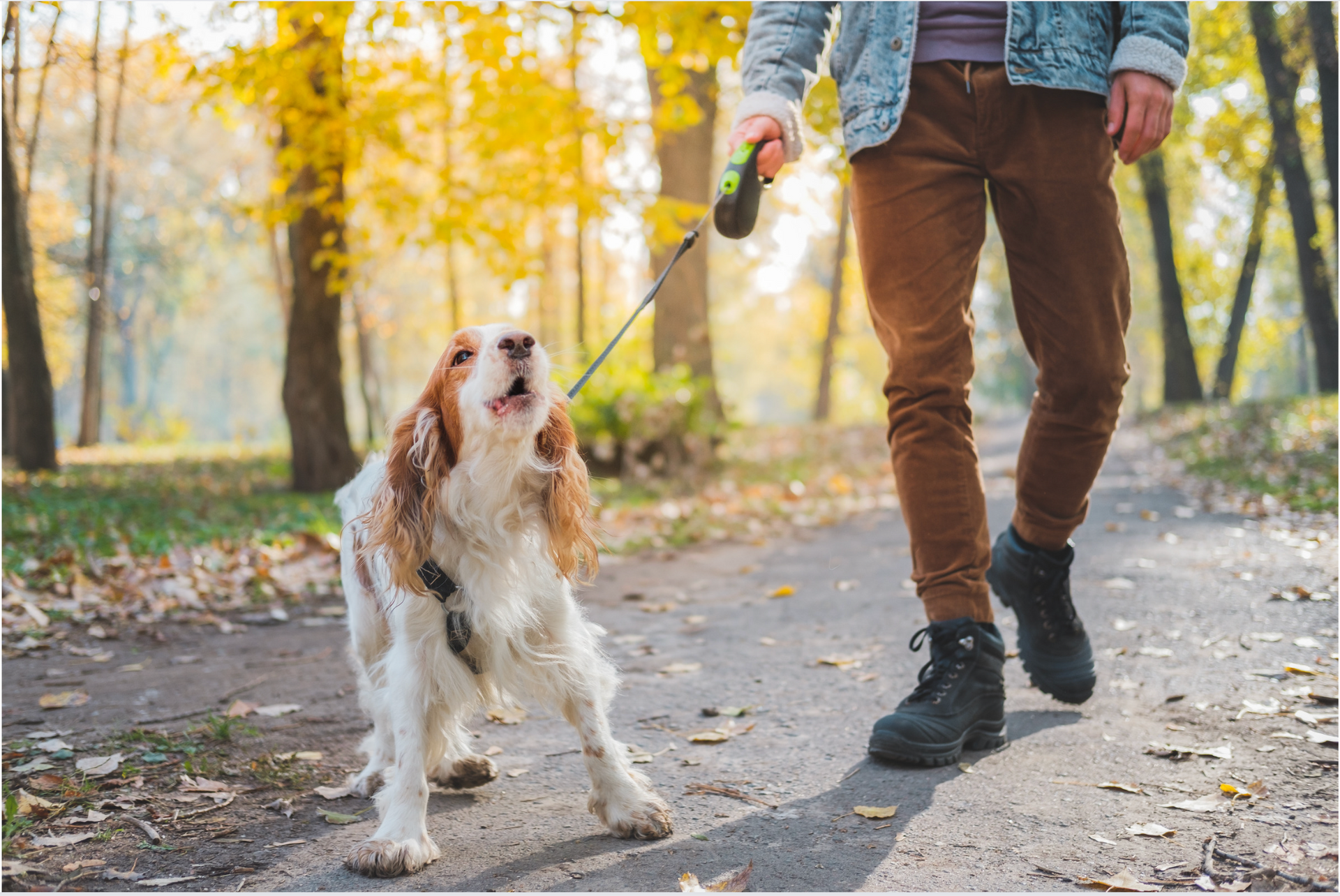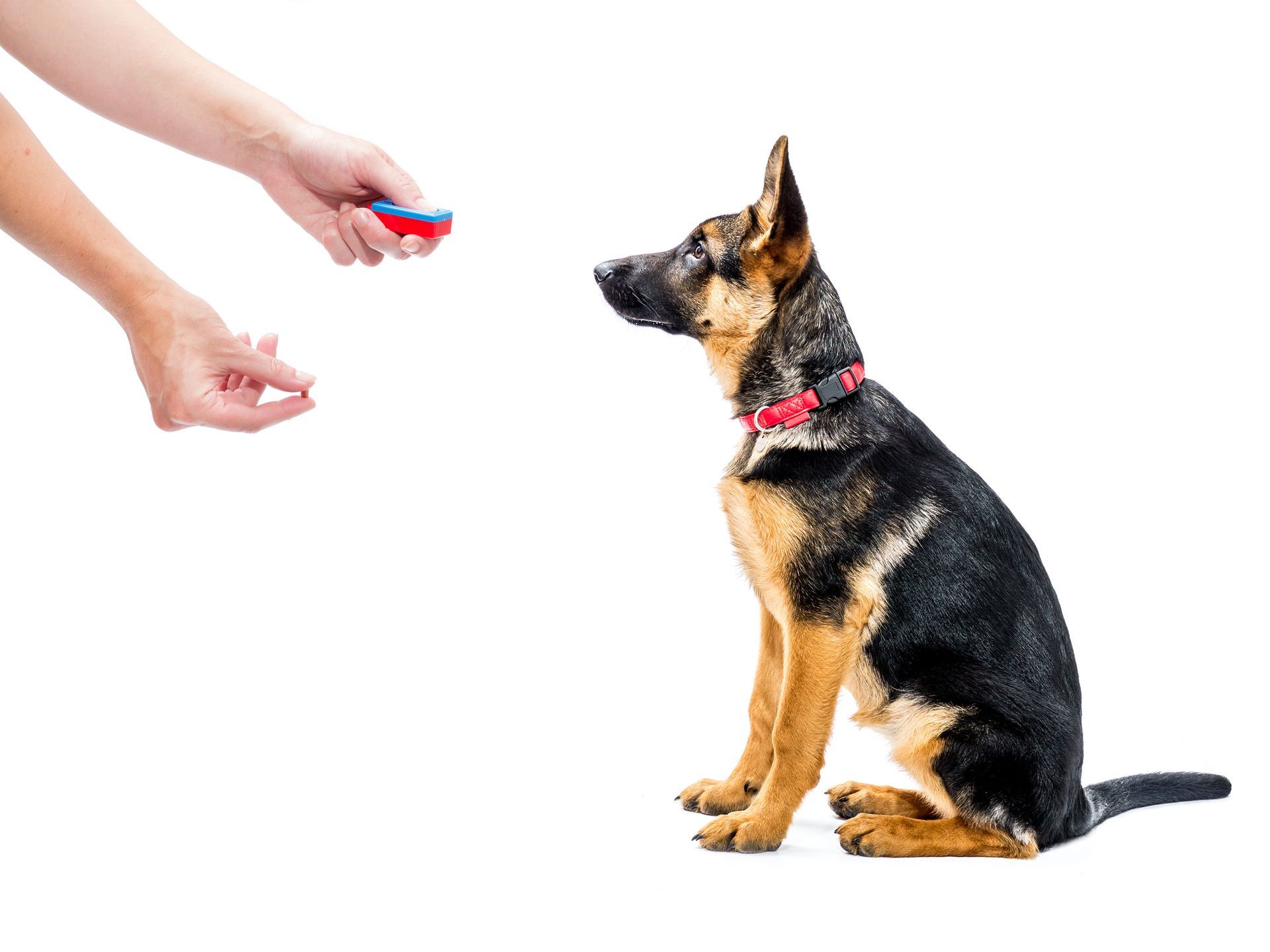The assessment of stimuli in reactive dogs

One of the areas in which I work most with client dogs is reactivity to a variety of stimuli. One dog reacts to other companions approaching him, another to people who want to touch him. It can sometimes drive us to despair when we are out in public with our dog and it barks at everything and everyone who comes towards it. Some may now be thinking: if only it stopped at barking...
I hear it every day: You have to really assert yourself, you absolutely MUST not let the dog get away with that. Since in most cases this unfortunately leads to exactly the wrong behavior on the part of us humans and, as a result, to even worse behavior in the dogs, I would like to explain to you why our dogs behave this way in the first place. And in order to do this, we first have to look at what is happening in our dogs' brains.

There is an area in our dogs' brains that plays an important role in recognizing and processing fear and threats. It is the amygdala. Let's take the example of a dog that barks on the leash and rages when it sees another dog. This dog may have had a bad experience before or has even been bitten. He now sees the other dog and the amygdala reports: “Attention, danger! Other dog!” Our dog will then want more distance to the other one and thus avoid the danger. But more than likely he learned already that we humans don't always notice when our dogs feels uncomfortable and we try to pass the other dog way too close or maybe even allow contact. Our dog actually wants to get out of the situation, but we pull him closer on the leash. Damn! So this strategy doesn't work. If our dogs cannot distance themselves, maybe the other one could. And very quickly we created a leash “aggression”, because what in almost all cases leads to our dog getting more distance is lunging and barking on the leash. The other dog handler is frightened and makes the desired distance and we are embarrassed and quickly get out of the situation too. And our dog learns “Great! So that’s how it works!”. And even if it's not fear, the other emotions will all be of a more negative nature as well: frustration, insecurity, territorial protection around where you live, etc. So our dog sees another dog and his brain initially evaluates this stimulus as negative. And this can sometimes happen very quickly.
For wild animals, it can be essential to their survival to act quickly and avoid danger. To ensure such rapid action, the body has built a shortcut in the brain. On the slow path, a stimulus hits the dog's sensory organs, is conducted from there via the thalamus to the cerebral cortex, where it undergoes analysis. If this shows that the stimulus is threatening, this information is sent to the amygdala. The dog becomes afraid and reacts based on his experiences, i.e. by fleeing or attacking. Now pause for a moment before you continue reading and think about how long this process will take. What do you guess?

We are talking about 24 milliseconds!! In the short path, the stimulus is perceived by the sensory organs and passed on directly to the amygdala via the thalamus. This only takes half as long, 12 milliseconds. This evaluation happens absolutely unconsciously! The dog has no influence on this and therefore on his reactions!! Our dog can't help it. At that moment, his brain gave him the information that danger was coming. This evaluation of stimuli obviously has a lot to do with experiences and if our dog has had a very bad experience, it makes biological sense that he can react quickly the next time the same situation occurs in order to avoid the danger this time.
Here I am building a bridge to my human existence. I'm afraid of spiders. As a child, we lived in a house where we encountered these big cellar spiders sometimes and I was terrified of them. Just writing these lines makes the hairs on my arms stand up. If I see something scurrying somewhere on the floor or on the wall out of the corner of my eye, I will definitely react by jumping to the side. And this happens to me so quickly and so unconsciously that I have no chance of stopping myself. Embarrassing, but that's how it is. If I had someone next to me pushing me and telling me how stupid I was, the situation would make me feel really bad and I would be worried about what they would say next if it happened to me again. In addition to my fear of the spider, the social evaluation of my reaction also plays a role and the situation as a whole becomes worse and worse. And our dogs feel the same way! The only difference is that I actually know theoretically that the spiders in our latitudes can't be that dangerous to me. Our dogs don't have the opportunity to think about it so logically!
If we react angry every time our dog misbehaves during dog encounters, the situation will only get worse for him. In addition to his negative emotions towards the other dog, there is also the unpredictable behavior of his handler. The spiral goes further and further downwards.
But how could you react much better? We should suppress all of our negative impulses! No body blocks, no tugging on the leash, no harsh speaking and definitely never violence such as pushing down or hitting!! Instead, we look for the distance at which our dog can still think and react with desired behavior. In my example it would be like this: I go into a room where I see a spider sitting 10m away, I have someone standing next to me who tells me “Hey, everything’s fine! Nothing happens! And if she moves, I'll make sure she doesn't get too close to you." After a few sessions, I might even be able to relax a bit and dare to reduce the distance a little. Maybe this someone will explain to me what I can do to improve the situation for myself. And at some point I dare to walk past the spider without panicking. Now, thank God, it doesn't happen often that I come across spiders. Just the thought of this happening to me multiple times a day would leave me on constant alert and would certainly make me sick sooner or later. My suffering would be enormous. I don't know about you, but when I sometimes think about what certain problems would look like when transferred from our dogs to humans, it's very easy for me to be patient and understanding. Our dogs are not machines, but have their own emotions towards things.










